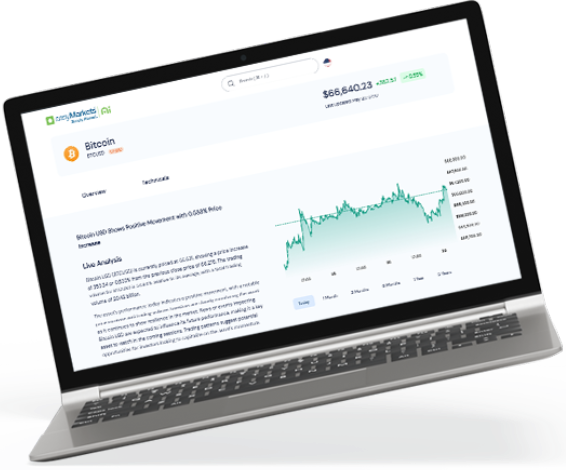O que é venda a descoberto?

A venda a descoberto é uma estratégia comprovada pelo tempo usada pelos traders para lucrar quando o mercado cai ou para proteger seus investimentos. Embora possa parecer complexo no início, o conceito é simples, e é exatamente isso que vamos mostrar a você aqui.
A venda a descoberto envolve especular sobre uma queda no preço de um ativo. É comumente usada por traders que acreditam que um ativo, como uma ação, um índice, uma commodity ou uma criptomoeda, está supervalorizado ou deve sofrer uma retração.
Por exemplo, se um trader acredita que as ações da Tesla estão com preço muito alto em comparação com seus pares, ele pode abrir uma posição vendida para se beneficiar de uma possível queda no preço. A venda a descoberto também pode funcionar como um hedge, ajudando a proteger contra possíveis perdas em um portfólio ao assumir uma posição oposta no mercado.
Como funciona a Venda a Descoberto?
Em geral, os traders executam vendas a descoberto de ativos como ações. Para vender uma ação a descoberto, o trader primeiro toma emprestadas as ações de um corretor. Após tomar as ações emprestadas, ele as venderá imediatamente e procurará comprá-las de volta mais tarde a um preço mais baixo. Se o valor do ativo cair, como previsto, o trader embolsará a diferença entre o preço de venda e o preço de compra após devolver as ações ao corretor.
Outra forma de se beneficiar da queda no preço de um ativo é por meio de produtos derivativos, como CFDs. Com esse método de negociação, você pode negociar os movimentos de preço de um ativo sem precisar possuí-lo. Assim, quando um operador espera que o preço de um ativo caia, ele pode simplesmente abrir uma posição de venda com um corretor. Esse método de venda é geralmente preferido entre os traders, pois é mais simples do que adquirir fisicamente um ativo.
O que é um exemplo de uma posição de venda de CFD?
Um exemplo de venda lucrativa:
Imagine que as ações da Ford estejam sendo negociadas a US$ 14. Você acredita que o preço provavelmente cairá e, por isso, decide vender 100 ações a descoberto via CFD (Contrato por Diferença). Isso significa que você está especulando sobre a queda do preço sem realmente possuir as ações.
No dia seguinte, o preço das ações da Ford cai 5%, para US$ 13,30.
Como o mercado se movimentou a seu favor, você obteve lucro com a diferença:
- • US$ 14 - US$ 13,30 = US$ 0,70 de lucro por ação
- • US$ 0,70 x 100 ações = US$ 70 de ganho total
Um exemplo de venda com prejuízo:
Agora imagine que as ações da Coca Cola estejam sendo negociadas a US$ 55. Você acredita que as ações estão supervalorizadas e provavelmente cairão, portanto, decide vender 100 ações a descoberto por meio de CFD.
Em vez de cair, o preço da ação sobe 2%, atingindo US$ 56,10 no dia seguinte.
Como o mercado se moveu contra sua posição, você incorreu em uma perda sobre a diferença:
- • US$ 56,10 - US$ 55 = perda de US$ 1,10 por ação
- • US$ 1,10 x 100 ações = US$ 110 de perda total
Vantagens e desvantagens da venda a descoberto de CFDs
Vantagens
- • Lucro com a queda dos preços dos ativos.
- • Não há necessidade de possuir o ativo.
- • Negocie com alavancagem para aumentar a exposição.
- • Eficaz como uma ferramenta de hedge de curto prazo para se proteger da volatilidade do mercado de curto prazo.
Desvantagens
- • Alta exposição a perdas se a negociação for contra você
- • Podem ser aplicadas taxas de swap para posições mantidas durante a noite
Como vender um instrumento de CFD com a easyMarkets
Crie uma conta e faça login
Registre-se e acesse sua conta da easyMarkets na web ou no celular.
Escolha seu instrumento
Temos mais de 275 instrumentos para negociar, incluindo moedas, criptomoedas, ações, índices, commodities e metais.
Hora de operar a descoberto
Clique no botão “SELL” para operar a descoberto (short) no instrumento selecionado.
Defina seus stops e limites
Defina os níveis de stop-loss e take-profit para ajudar a gerenciar o risco, fechando automaticamente as negociações para limitar as perdas ou garantir os lucros em pontos de preço predeterminados.
Monitore sua negociação
Acompanhe o desempenho e faça ajustes, se necessário.
Feche sua posição
Se o ativo cair como esperado, você lucrará. Se, ao contrário, ele subir, você terá prejuízo.

A venda a descoberto é uma estratégia comprovada pelo tempo usada pelos traders para lucrar quando o mercado cai ou para proteger seus investimentos. Embora possa parecer complexo no início, o conceito é simples, e é exatamente isso que vamos mostrar a você aqui.
A venda a descoberto envolve especular sobre uma queda no preço de um ativo. É comumente usada por traders que acreditam que um ativo, como uma ação, um índice, uma commodity ou uma criptomoeda, está supervalorizado ou deve sofrer uma retração.
Por exemplo, se um trader acredita que as ações da Tesla estão com preço muito alto em comparação com seus pares, ele pode abrir uma posição vendida para se beneficiar de uma possível queda no preço. A venda a descoberto também pode funcionar como um hedge, ajudando a proteger contra possíveis perdas em um portfólio ao assumir uma posição oposta no mercado.
Perguntas frequentes sobre Vendas
Se você entrar cegamente em uma posição de venda sem entender o que é e como funciona, isso pode ser considerado muito arriscado. No entanto, se você tiver uma estratégia de negociação clara e usar ferramentas adequadas de gerenciamento de risco, isso poderá limitar sua exposição e reduzir a probabilidade de perdas. Com a easyMarkets, você pode tirar proveito de ferramentas inovadoras, como a proteção de saldo negativo e o Stop Loss Garantido sem Slippage*.
A easyMarkets não cobra comissões. Você paga apenas o spread e, se for mantido durante a noite, uma taxa de swap.
Comece a negociar com apenas US$ 25.
Os traders podem procurar vender um ativo quando notícias ou dados sugerirem que ele está supervalorizado ou que seu desempenho pode enfraquecer. Isso pode incluir previsões de lucros ruins, orientação negativa ou retrações mais amplas que afetem o setor.
Esses são apenas alguns exemplos comuns; no entanto, todo trader deve sempre fazer sua própria pesquisa e avaliar os riscos antes de decidir vender.
Forex, ações, índices, commodities, metais, criptomoedas - o que você quiser. Se for negociável, é provável que você possa vendê-lo a descoberto.
Somos uma corretora regulamentada com mais de 20 anos de experiência. Somos licenciados pela FSA, FSC e FSCA, e oferecemos plataformas que incluem nossas plataformas Web e App, MT4, MT5 e integração no TradingView.
Mais importante ainda, damos aos traders acesso a ferramentas exclusivas de gerenciamento de risco, como Stop Loss Garantido sem Slippage* e Proteção de Saldo Negativo, para negociar com mais confiança.
*O Stop Loss Garantido sem Slippage está disponível apenas na plataforma de negociação web e de aplicativos da easyMarkets. Ative com spread mais amplo para controle total do risco.














